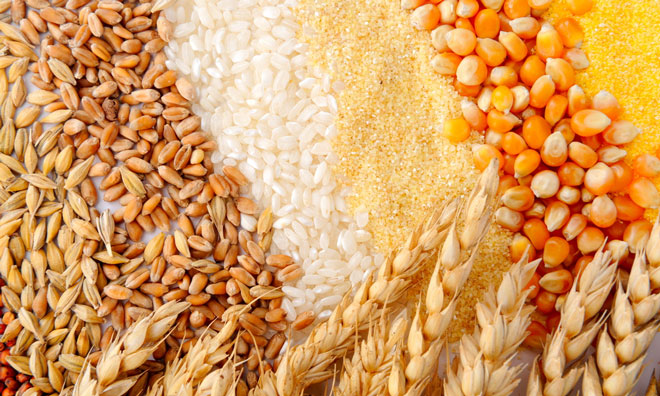Extrusion of cereals
- Like
- Digg
- Del
- Tumblr
- VKontakte
- Buffer
- Love This
- Odnoklassniki
- Meneame
- Blogger
- Amazon
- Yahoo Mail
- Gmail
- AOL
- Newsvine
- HackerNews
- Evernote
- MySpace
- Mail.ru
- Viadeo
- Line
- Comments
- Yummly
- SMS
- Viber
- Telegram
- Subscribe
- Skype
- Facebook Messenger
- Kakao
- LiveJournal
- Yammer
- Edgar
- Fintel
- Mix
- Instapaper
- Copy Link
Posted: 26 August 2010 | Mian N. Riaz, Head of Extrusion Technology Program, Texas A&M University | 5 comments
The world cereal yield was 2,219 million tons in 2009, according to the United Nations Food and Agriculture Organisation1. Cereal grains are grown all over the world and provide more food energy than any other type of crop, they are therefore staple crops. Cereals can be consumed in their natural form as whole grain and they are a rich source of vitamins, minerals, carbohydrates, fats, oils and protein. However, some cereals are processed using different methods where bran and germ are removed; the remaining endocarp is mostly carbohydrate and lacks the majority of the other nutrients.


In some developing nations, grain is in the form of rice, wheat, or maize (in American terminology: corn), which constitutes a majority of daily sustenance. In developed nations, cereal consumption is moderate and varied but still substantial. Cereals are processed using different methods to develop several cereal products that are consumed on a daily basis. One of the most commonly used processing methods for cereal is extrusion. This technology is used to develop breakfast cereal, extruded snacks, cereal based ingredients and several other cereals based on extruded food products.
Cereal extrusion
Most cereals contain a large amount of starch. In its natural form, the starch is insoluble, tasteless and unsuited for human consumption. To make it digestible and acceptable, it must be cooked. Cooking or gelatinisation of starch in the traditional cereal process is controlled by time, temperature and availability or presence of water. In the extrusion cooking process, shear is a fourth dimension that impacts product quality. Almost any cereal can be cooked using an extruder, but if expansion is a major objective, the numbers of functional cereals are limited to de-germed corn/grits and rice. Cereals that have high amounts of lipids are more difficult to expand due to dough slippage within the extruder barrel. This type of cereal usually requires high moisture and high temperature before significant puffing will occur. In general, starches with 5 – 20 per cent amylose content will significantly improve expansion as well as texture of the breakfast cereals and snack foods. The most common cereals used on a daily basis for making breakfast cereal and snack foods are described below.
Corn
Extruded snacks and breakfast cereals are a growing segment of the corn-based market. Corn (also called maize) is a primary ingredient for corn collets and many pellet products. For most corn based breakfast cereal and extruded snacks, dry-milled corn meal is used. Large quantities of corn meal are used in puffed extruded snacks and breakfast cereal pro – duction and some is used in corn chips. Cornmeal, corn grits, corn flour and corn cones are all different forms of dry-milled dent corn, and in general vary only in particle size distribution. Selection of the granulation depends upon the type of snack, breakfast cereal and type of extruder. For example, for fine texture and cell structure, or softer bite, a fine granulation of corn meal should be used. For crunchy texture and a slightly larger cell structure, coarse granulation of corn meal is desired. Similarly, twin screw extruders can handle fine as well as coarse granulation corn flour, while collet extruders require coarse granulation. Mostly, de-germed corn is used in breakfast cereals and extruded snacks because it expands better than a whole corn.
Wheat
In the snack food industry, wheat flour is used for baked / fried snacks, flavoured crackers, snack cakes, pretzels, bread and the like. Semolina, (coarse particles) usually produced from hard wheat milling, is also used in breakfast cereals and snack foods. The semolina product has an expansion ratio and bulk density almost the same as corn meal. Snack foods and breakfast cereals with all-semolina will produce a very crispy texture. Wheat starch granules are fairly large (20 – 40μm) as compared to other cereal grain starches. In extruded snacks and cereal based food products, wheat gluten provides nutritional value, crispness and desired texture. Milling by-products of wheat (bran) can be used with soy protein and some other ingredients to produce expanded snack foods and breakfast cereals of high nutritional and fibre value. The use of wheat in breakfast cereals and snack foods formulation is limited because of cost.
Rice
Rice is the one of the largest crops grown in the world. In the US, rice ingredients are not commonly used in breakfast cereals and snack food formulation. In Japan, most of the extruded snacks are made with rice or rice flour. One major reason is the cost of the rice as compared to the other snack foods ingredients. Broken rice can be used as an ingredient in expanded or puffed snack products, as well as breakfast cereals since rice has a good expansion quality. Rice starch granules are the smallest (2 – 8μm) of all grain starches and it digests very easily. Its functional properties are very different from corn or wheat starches. Selection of the rice starch in the extruded food products formulation will depend upon the amylose content of the common rice varieties. Chips made with 100 per cent rice flour absorb 20 – 30 per cent less oil during frying. In a formulation where a rice and potato blend is used, the potato flavour and texture remain distinctive even though it is mixed with the less costly rice blend.
Oats
In general, oats are marketed as rolled oats or as an ingredient for breakfast cereal. Oats have not been used in grain-based snacks as wheat and corn. Recent discoveries showing that oat bran can reduce serum cholesterol level in humans had boosted the market for oats in the snack food industry. The major problem with oats is high oil content (seven to nine per cent) and lipase enzymes. Before using oats in the breakfast cereals and snack food formulation, it is best to inactivate the lipase. Otherwise, lipase will catalyse the hydrolysis of oil, which would lead to the production of bitter tasting free fatty acid. Oat starch granules are comparatively small (2 – 12μm) in size than other starches. Amylose content of oats varies from 16 – 27 per cent. Oat starch has a very strong flavour and gives a light brown colour to the product. It requires a relatively low gelatinisation temp – erature, but higher amount of energy input for cooking because of higher amounts of oil content. Oats contain a high level of fibre. Breakfast cereals and snacks extruded with oat starch expand poorly. For this reason, it has only found its way into products at low levels. By using longer barrel extruders with a pre – conditioner, a higher level of oats can be used in breakfast cereals and snack foods. Among the snacks that have traditionally included oats in their formulation are cookies and granola. With new technologies and more interest in oats due to health claims, oat-based breakfast cereals and snack products may be popular in the future.
Barley
Barley is used in small quantities in some snack and breakfast cereal formulations. It has a mild flavour and nutritionally is almost the same as wheat, except it contains considerably more fibre. Barley starch granules are medium to large in size as compared to other cereals. A reasonable amount of expansion can be obtained during extrusion of breakfast cereals and snack foods using barley starch. It gives a light brown to gold colour to the product. Snack food and breakfast cereal formulations containing barley starch need low cooking temperatures during extrusion. Barley fibre can be used in healthy snack foods as a fibre supplement. Sometimes a manufacturer uses barley in multi-grain snack foods and breakfast cereals in order to add an extra cereal on the label.
Sorghum
Currently, the majority of the sorghum is used for animal feeding and ethanol production. Sorghum is rich source of dietary fibre, condensed tannins and gluten free starch. Sorghum contains 7 – 16 per cent protein, 55 – 75 per cent starch, 0.5 – 5 per cent lipids, one to six per cent crude fibre and 1 – 4.5 per cent ash. Sorghum has the potential to use in food products because it does not impart strong flavours. It is also possible to utilise whole grain and bran of the sorghum to produce breakfast cereal products with an improved level of important compounds that have been associated with health. The latest research indicates that dark coloured sorghum contain tannins that are possibly advantageous in certain type of cancers. Consumer demand for gluten-free products, particularly in the US, is rising steadily with an increase in Celiac disease and other allergic reactions to gluten from wheat, rye or barley-based foods. Gluten-free snacks and breakfast cereal products represent a growing market opportunity within the global health and wellness market.
Other cereal sources
Cereals such as rye, millet, amaranth and triticale can also be processed using extrusion technology to produce cereal based products.
What is extrusion?
Extrusion is simply the operation of shaping a plastic or dough-like material by forcing it through a restriction or die. A food extruder is a device that expedites the shaping and restructuring process for food ingredients. Extruders can be used to cook, form, mix, texturise and shape food products under conditions that would favour quality retention, high productivity and low cost.
Food extrusion is a process in which a food material is forced to flow, under one or more varieties of conditions of mixing, heating and shear, through a die which is designed to form and/or puff-dry the ingredients2. Raw materials are transported into a cooking zone where they are compressed and sheared at elevated temperatures and pressures to undergo a melt transition and form a viscous fluid. The food extruders can be visualised as a high temperature short time (HTST) device that can transform a variety of raw ingredients into intermediate and finished products. During extrusion, the cooking temperature could be as high as 100 – 170°C, but residence time is usually 20 – 40 seconds (depending on types of extruders and speed of the shaft). For this reason, the extrusion process could be called a HTST process. Extrusion technology provides the opportunity to process a variety of food products just by changing a minor ingredient and processing condition on the same machine. Several different shapes, texture, colour, and appearances can be processed by minor changes in the hardware and processing conditions. The extrusion process is energy efficient and low cost compared to other processes. Extrusion has provided the means of producing new and creative snack foods and breakfast cereals. Extrusion processing equipment has become the touchstone operating equipment in most of the breakfast cereals and snack food companies throughout the world.
Advantages of extrusion
Extrusion technology provides several different advantages over the traditional methods of breakfast cereals and snack food processing. Some of these advantages include the following:3,4
- Adaptability: ample varieties of products are feasible by changing the minor ingredients and the operation conditions of the extruder. The extrusion process is remarkably adaptable in being able to accommodate the demand by consumers for new product
- Product characteristics: a variety of shapes, texture, colour and appearances can be produced, which is not easily formed using other production methods
- Energy efficient: extruders operate at relatively low moisture while cooking food products, so less re-drying is required
- Low cost: extrusion has lower processing costs than other cooking and forming processes. We can save 19 per cent raw material, 14 per cent labour and 44 per cent capital investment5
- Less space: extrusion processing needs less space per unit of operation than other cooking system
Types of extruders
There are several different styles of extruders available in the market. This may cause difficulty for cereal processors to select a proper extruder for breakfast cereals and snack production. During food extrusion, a number of functions occur in a short time, i.e., conveying, mixing, homogenisation, deaeration, heating/ cooling, cooking, sterilisation, forming/shaping, expansion, texturisation, flash drying and centre filling. In general, extruders are divided into two major categories: single-screw and twin-screw.
Single-screw extruders
Single-screw cooking extruders have compressive screws with decreasing channel depth turning at high speeds to increase shear and mechanical energy input for heating. The resulting friction induces heating of a product. In some cases, the barrel is jacketed for steam to allow additional contact heating in the metering section. To increase capacity and efficiency, it is common to preheat ingredients in a pre-conditioner by adding steam before they enter the extruder. Categories of single-screw extruders include:6
- Cold Forming (Pasta-Type) Extruder: deep flight, smooth barrel, low shear speed. Little or no cooking. Used for pasta, pastry dough, cookies, egg-rolls, ravioli, processed meat and certain candy
- High-Pressure Forming Extruder: grooved barrels to prevent a slip at the wall and greater compression in the screw design. Commonly used for pre-gelatinised cereal and fried snack foods
- Low-Shear Cooking Extruders: moderates shear machines with high compression machines and grooved barrels to enhance mixing. Soft-moist foods and meat like snacks such as simulated jerky
- Collet Extruders: high shear machines with grooved-barrels and screw with multiple shallow flights. Used for puffed snacks and expanded curls or collets
- High Shear Cooking Extruders: high shear machines, with screws of changing flight depth, HTST devices. Make pet food, ready-to-eat cereal (RTE), candy, crisp breads, precooked food ingredients, pre-gelatinised corn flour, dried food mixes, instant beverage powder, croutons and breading, crackers and wafers, enzymes’ deactivations of full fat soy flour, imitation nuts, famine relief feeding, texturised vegetable protein (TVP) and deactivation of enzymes in cereal and oilseeds
Twin-screw extruders
Twin screw consists of two parallel screws in a barrel with a figure-eight cross section. The use of twin-screw extruders for food processing started in the 1970s, with an expanding number of applications in the 1980s. Twin-screw extruders are generally one and a half times or more expensive than a single screw machine for the same capacity7. Yet the degree of quality control and processing flexibility they offer can make them attractive to food industries. Twin screws produce a more uniform flow of the product through the barrel due to the positive pumping action of the screw flights. Some other advantages of twin screw are:
- Can handle viscous, oily, sticky or very wet material and some other products, which will slip in single screw extruders (it is possible to add up to 25 per cent fat in a twin-screw extruder)
- Less wear in smaller part of the machine than in single screw extruder
- Wide range of particle size (from fine powder to grains) may be used, whereas single screw is limited to a specific range of particle size
- Because of the self-wiping characteristics, clean-up is very easy
Four types of twin-screw extruders are possible:
- Non-intermeshed, co-rotating
- Non-intermeshed, counter rotating
- Intermeshed, co-rotating
- Intermeshed, counter rotating
From these four types of twin-screw extruders, co-rotating, intermeshed screw type has found the widest acceptance in the food industry.
Other extrusion cooked cereal products
The extrusion process is able to bring gelatinisation, solubilisation and complex formation of starches, polymerisation of protein, partial or complete deactivation of enzymes, reduction of microbial load and production of particular forms of texture. The process can be used to make many food products from cereal besides breakfast cereal and snacks, such as flat bread, soup bases, modified starches, brewing adjunct, drink bases, high dextrose equivalent syrups, biscuits, croutons, breading and confectionery. Besides these end products, extrusion cooking is also used for making intermediate products for further processing for both food and non food uses.
Conclusion
Although introduced more than 60 years ago, continuous extrusion cooking is still evolving and seem to offer a solution to some of the issues encountered when developing new products using batch cooking systems8. Extrusion has made manufacturing more effective by bringing together several processing steps in a single, continuous unit. Extrusion cooking is now a well-established process for producing cereal based products. It has a unique feature compared to other traditional methods. This technology offers many advantages over conventional forms of cereal processing methods. The major advantage is that it is a continuous process, which lends itself well to the production of both expanded and dense cereal products. Today, extruders are capable of producing a wide range of cereal products.
References
- UN News Center. Global cereal production continues to reach unexpected highs – UN report. http://www.un.org/apps/news/ story.asp?NewsID=31024
- Rossen, J. L. and Miller, R. C. (1973) Food extrusion. Food Technol., 27:46-53
- Smith, O.B., (1971) Why use extrusion. Symposium on Extrusion: Process and Product Development. American Association of Cereal Chemists. St. Paul. MN
- Riaz, M.N. (2000) Extruders in Food Application. CRC Press. Boca Raton, FL Originally Published by Technomic Publishing
- Darrington, H. (1987) A long-running cereal. Food Manuf. 3:47
- Harper, J. M. (1981) Extrusion of Food. Vol. 1. CRC Press Inc. Boca Raton, FL p127-128
- Lusas, E. W. and Riaz, M. N. (1994) An introduction to extruders and extrusion principles. Extrusion Communiqué. 7(4):9
- Vessa, J.A. (1990) Processing characteristics of kneading single screw vs. co-rotating twin screw cereal extrusion. Cereal Food World 35:1162
About the author
Dr. Mian N. Riaz is the Director of Food Protein R&D Center, Head of Extrusion Technology Program and a graduate faculty in the Food Science and Technology Program at the Texas A&M University, USA. He published four books, 14 chapters and more than 100 papers on extrusion and other related topics.










This is a very good article, thank you for sharing, there are not many such articles in this field.
This is a very good article, thank you for sharing, there are not many such articles in this field
Article breaks down the key point into an easy to follow write up. Learnt a lot from this. Thanks for sharing!
This article is very good and informative, I am interested to learn more on extrusion technology, is there any opportunity for me to learn..?
I loved this article. Informative and easily understood.